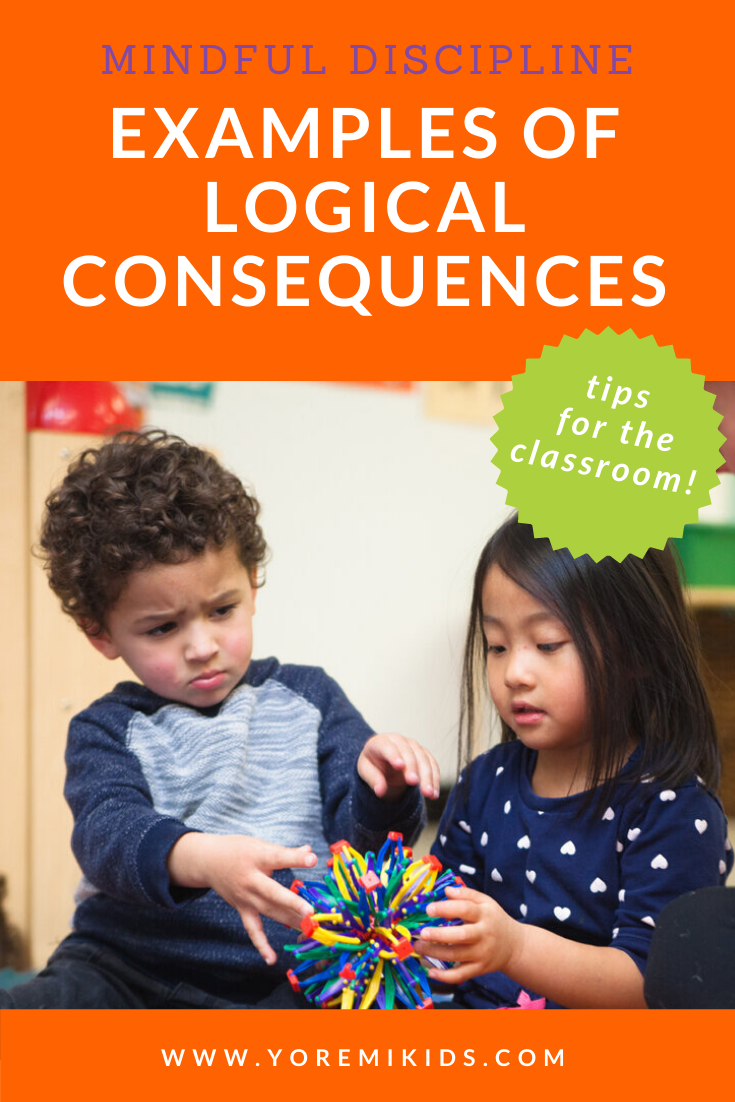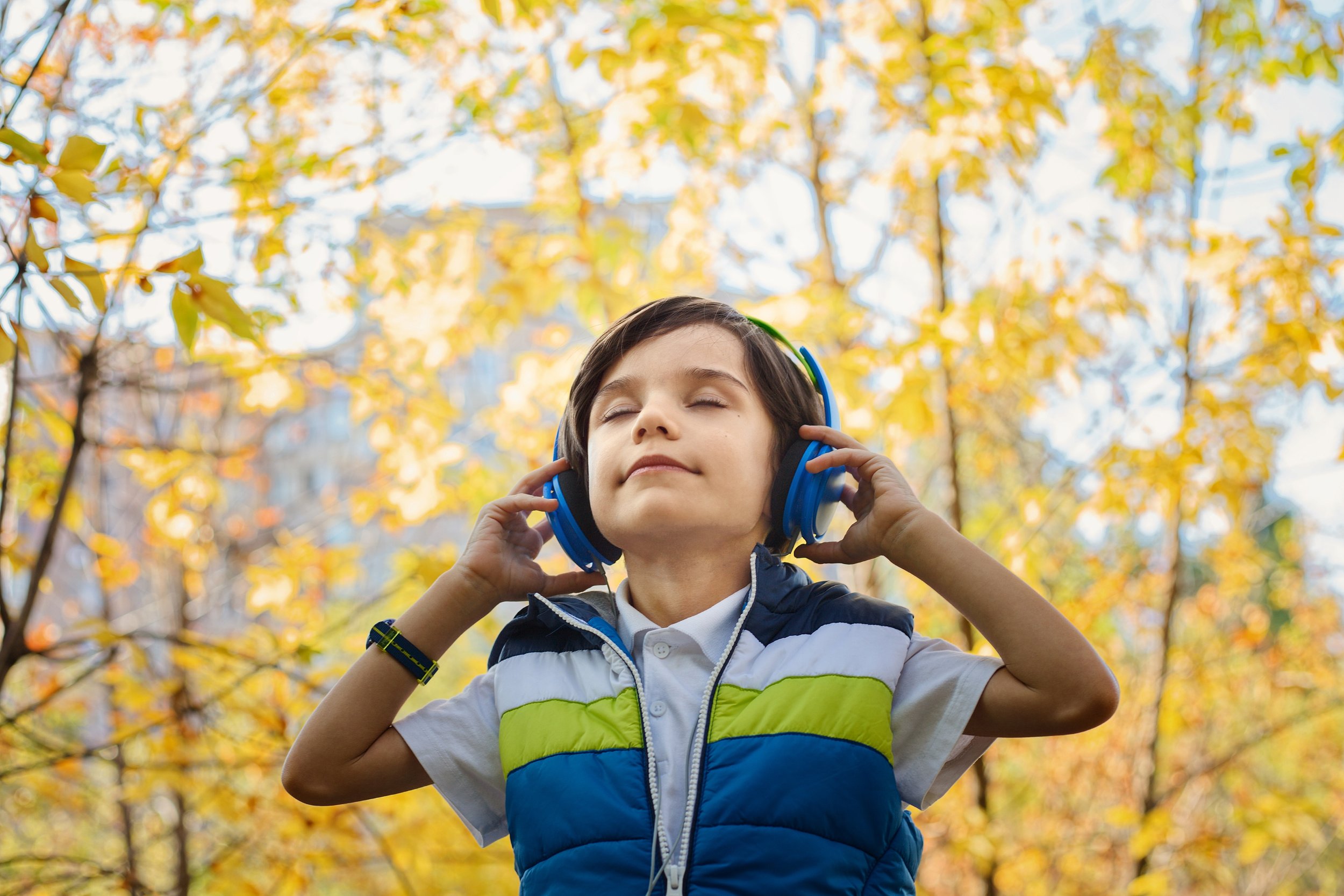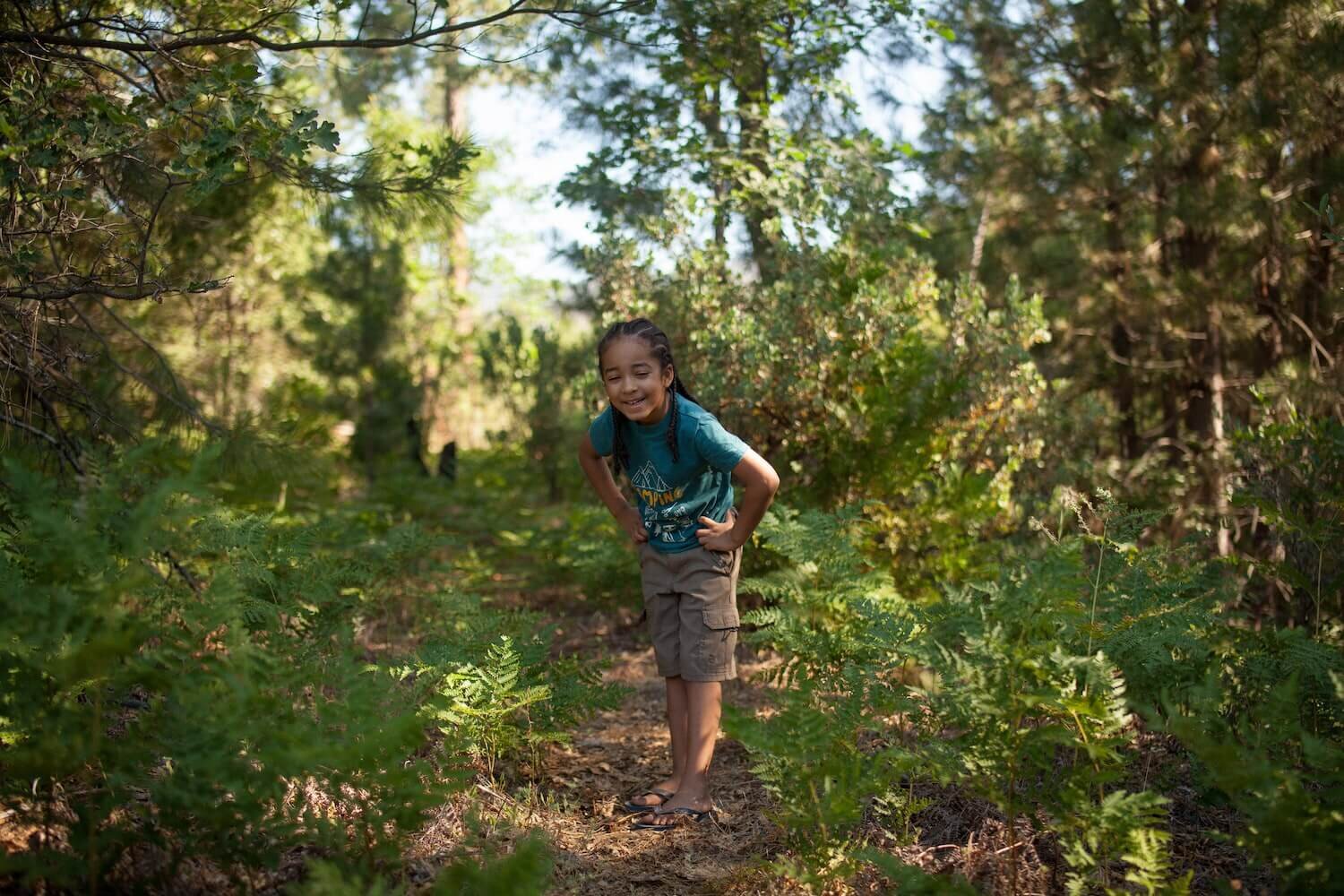How Logical Consequences Help Rethink Discipline in the Classroom
Children are inevitably going to break, ignore or forget the rules…even ones they helped create. As parents and educators, it’s our job to fill a disciplinary role with the children in our care. But doling out punishment might remind us of being reprimanded in a way that felt belittling, unsafe and unsupportive.
Do any of these scenarios sound familiar?
A child sprints down the school hallway, rounding a corner and crashing into another student.
You find a wet pool around the fountain as kids decided to engage in some impromptu water play.
A child repeatedly talks over others, calling out ideas and comments even after everyone has been reminded to quietly signal when they want to speak.
Avoiding discipline can be just as harmful. Children have a tremendous opportunity to learn that their actions create effects, while the ramifications of poor decisions are still relatively benign.
What is the Best Form of Discipline for Kids?
For all these reasons and many more, adults often either completely eschew the idea of discipline or implement an authoritarian model. But both of these paths actually rob children of a valuable lesson.
Children need boundaries to feel safe and learn how to successfully navigate in society. But if they behave just “because we said so” or out of fear, they end up missing the chance to discover that their choices and actions have the power to create specific outcomes.
Employing logical consequences in and out of the classroom creates appropriate boundaries, teaches causation and allows children to feel empowered to create the life they choose through their decisions and deeds.
READ NEXT: Genius or Bad Behavior?
Are we setting impossible expectations for our preschoolers? Next, read our article on why we think some "bad behavior" may in fact be signs of genius.
Rethinking Discipline: what does discipline really mean?
The word discipline means many different things to different people. Is it punishment? Obedience? Is it enforcing the rules or the rules themselves? Is it doing what you are told or what you think is right?
Is there choice, or simply compliance?
Is there a “right” or “wrong” way to discipline?
To clear up the confusion, let’s ignore the contemporary definitions of discipline and take it back to the beginning:
Discipline comes from the Latin word disciplina meaning "instruction and training.”
Derived from the root word discere, "to learn,” a disciple is a student.
As we have already discussed in our article on fact-based observations (and how they allow us to create no-judgement environments), the most effective learning comes from within… self-awareness creates intrinsic motivation.
The best discipline is not something done to us, but instead something we learn to do for ourselves.
As adults, it’s our job to provide the guidance for children to learn internal discipline. It cannot only be obedience, with the goal of meeting arbitrary standards or avoiding punishment. Rather, it must involve teaching a child to apply their own internal standards to achieve meaningful objectives.
“Too often we forget that discipline really means to teach, not to punish.”
A child’s brain is still developing, and our expectations must be age-appropriate. Recent studies have shown the pre-frontal cortex (PFC), the part of the brain responsible for higher-order thinking, decision making and moderating social behavior, does not fully develop until age 25!
We can help children develop self-regulation and executive functioning skills along the way, but there will still be times we adults have to actually be their PFC. Employing logical consequences allows us to fulfill that role while supporting a child’s ongoing development.
What are Logical Consequences?
Our use of Logical Consequences is inspired by the creators of the Responsive Classroom educational method.
In this student-centered, social and emotional learning approach, an effective teacher would utilize proactive, rather than reactive, instruction. The goal is to create a safe, joyful, and engaging classroom while helping children practice appropriate attitudes and behaviors rather than be constantly reacting to inappropriate ones.
“The goal of logical consequences is to help children develop internal understanding, self-control, and a desire to follow the rules.”
Employing logical consequences requires a tremendous amount of presence and empathy from teachers to ensure every child has the opportunity for success.
Success is a logical consequence as well! Logical consequences are never punishments - they are the immediate and realistic effects of behavior.
In Responsive Classroom, logical consequences are often discussed in relation to managing off-task behavior or misbehavior. But we like to take that a step further and use the combination of fact-based observations and logical consequences to respond and reflect all behavior.
The Language of Logical Consequences
When we begin teaching children about logical consequences in the classroom, we first have to lay the foundations for positive behavior. This involves creating community, setting up routines and collaborating to discuss classroom rules and goals.
Then we can teach students how to translate those rules and expectations into behavior, and hold students accountable to that behavior in a consistent manner. It is important to communicate behavior expectations clearly and often, and to impose logical consequences with fairness using firm and caring demeanor, words and tone.
examples of the language of logical consequences in the classroom
If-Then Statements:
“If Cindy needs help to answer the math example, then she can ask another student to come up and assist.”
“You may decide where you sit for reading. If you do not choose a seat, then I will choose for you.”
When, Since, Because Statements:
“We will continue reading our book when you are sitting.”
“When you hit my head, it hurt me and now I want to stop the game.”
“Keep jumping until I stay Stop. When we’re done, we’ll take a break.”
“Since you made the signal, I know you want to use the bathroom.”
“I’m calling on you because you raised your hand.”
Fact-Based Observations
“You walked all the way to the pool. That makes me so excited!”
“It’s very loud in here. We have to stop for a moment to make sure everyone is listening.”
“No one raised their hand. Let me explain the question so you understand it a little better.”
The most important thing to remember about logical consequences is that they are always judgment free. In our article on Practicing Non-Judgement in the Classroom, we discussed the power of fact-based observations in education. Logical consequences use that same mindful language to encourage self-esteem, self-awareness and ultimately self-regulation, while ensuring that everyone feels included and respected.
In fact, logical consequences are often fact-based observations and vice versa. These two pillars of mindful language in the classroom can be used interchangeably to create a positive and inspiring environment for learning.
9 Steps for Implementing Logical Consequences in the Classroom
Ready to start putting this into practice? Follow these steps (logical consequences examples) and you will be off to a great start!
Use fact-based observations to motivate behavior. By acknowledging student’s efforts, we create a classroom and school environment where students choose appropriate behavior out of respect for themselves as well as everyone in the community.
“When you came to the meeting rug today, everyone sat down quickly. That meant we could start sooner and have more time to sing your favorite songs.”
Develop clear expectations and rules. Children need boundaries to feel safe. The more proactively and consistently we communicate classroom expectations, the more successful everyone can be!
“We have agreed in our class that we signal a desire to speak by raising a quiet hand. I am looking for a friend with a quiet hand who would like to share.”
Use frequent reminders. Children thrive with routine and love mastering a new skill or concept. What we adults might consider to be overly repetitive actually really helps children succeed.
“Everyone is lining up quickly to walk to music class. Let’s review the way we travel through our school. Raise a quiet hand if you would like to remind everyone about one of our hallway rules.”
Provide tools and support for self-regulation and self-control. Each child will have varying needs for support and those needs can change throughout the school year and even throughout the day. Create various ways to check in with children to proactively address things before they escalate.
Implement a Hello/Goodbye chart and have children select their desired greeting as they enter the classroom.
Create a Calm Corner or Peace Paradise in your classroom…a spot where children can go in moments of stress or emotional overwhelm to take some deep breathes. Stock it with a breathing ball, a glitter jar and other mindfulness tools.
Give an outlet for dialogue and collaboration. Engage children in problem-solving and you may be surprised with the creative solutions they come up with! Involve them in creating their own tools for self-regulation and you teach them the skills of self-control while also showing them they can do it on their own.
“I am about to pass out tambourines. We have agreed that no one is going to touch their tambourine until I finish passing them out and say Go. I know that tambourines are really exciting…What could we do with our hands so we don’t pick them up too early? What will happen if someone forgets and picks up their tambourine before I say Go?”
Inspire proactive and restorative responses to conflicts. Even in the most responsive environment, children are still going to break the rules and engage in undesired behaviors. But we can decide to view these moments as opportunities rather than failures. The restorative model gives children the opportunity to fix what they have broken or repair any damage caused while developing the self-discipline needed to prevent similar problems in the future.
Child A knocks over another Child B’s block structure. Have the first child ask, “Can I help you feel better?” They might offer possible solutions like hugs or help rebuilding. Child B can accept the solution or offer another idea until they mutually agree. An added benefit of this example is that children learn they can solve conflict without a teacher.
Ensure everyone feels safe and respected. All logical consequences must be delivered in a empathetic and caring manner. If we are too upset or angry in the moment, we need to take a break first. Children spend much of their day being yelled at by adults and that style of communication is disrespectful, scary and ultimately ineffective. It is okay to feel triggered or riled up by a child’s behavior but until we can separate the behavior from the child, we are not able to implement logical consequences mindfully.
Provide a re-entry point to activities. Ultimately the goal of logical consequences is to help children stay or get back on track. An effective consequence may be asking a child to take some time out of an activity to regain self-control. The important step that is often overlooked is collaborating with that child to create a strategy for re-entry. Otherwise it is not a logical consequence, it is a punishment.
“We are all standing on our spots but I see you jumping, spinning and bumping into other friend’s bodies. If you cannot stay safely in your spot, I will ask you to sit in the chair until you feel you can return with a safe body.” The teacher can check in and collaborate on a strategy for returning. If they cannot return safely to the activity that day, then we create a strategy for return tomorrow.
Apply consistently. Consequences must always be applied fairly with all students for them to be taken seriously. As educators we must constantly uncover and monitor our own implicit biases to ensure fairness in our classroom.
According to analysis of national data, on every school day in 2016, around 250 preschool children across the country were suspended or expelled for bad behavior. Preschoolers are expelled at rates more than three times higher than school-aged children.
Black children were more than twice as likely to be suspended or expelled than other children, and boys were given 82 percent of the suspensions and expulsions, even though they represent 51 percent of the population of preschool children. Learn more about age-appropriate expectations for preschoolers.
Focus on Process, Growth and Potential
Implementing logical consequences works best when we assume that everyone is doing their best, including ourselves! Notice a tendency to think a child is not trying or is somehow purposely pressing your buttons. Ask and reflect on what we can do to support that child’s success.
What is it that they need?
What needs are not currently being met?
Create a team of support with that child and let them know you are in it with them!
Acknowledge the difficulty of learning new skills and create opportunities for small victories. These will bolster a child’s confidence that they can achieve the desired behavior both through their own efforts and through the support of others in their community.
Save this article for later and don’t forget to download the Yo Re Mi app for children’s mindfulness and musical yoga videos.

















